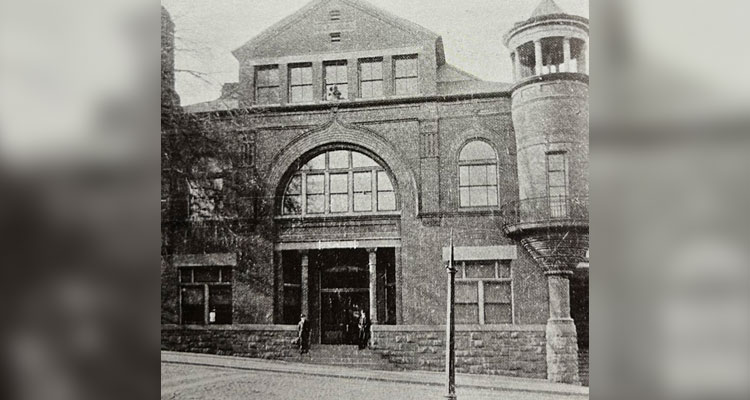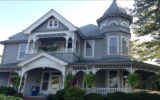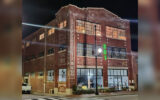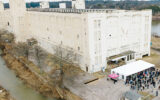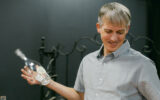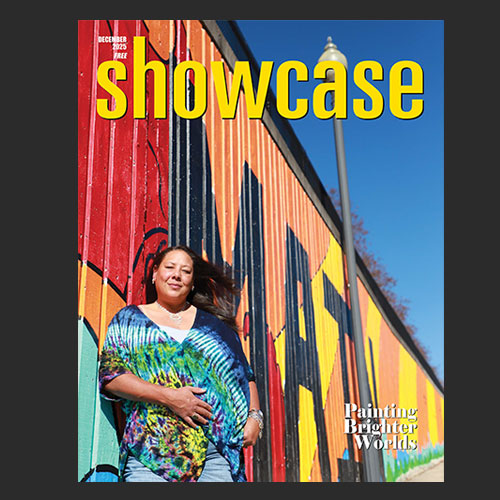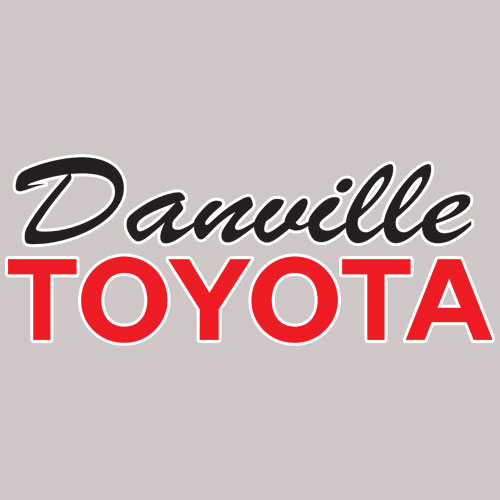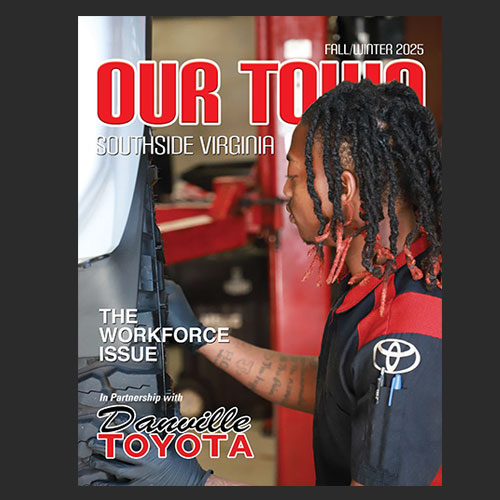It is very easy to miss.
About halfway down Floyd Street, between Hotel Danville and the City Auditorium, the head of a terra cotta Hereford bull looks out sleepily over the cobblestones. It is seemingly out of place, both for the building it’s on, but also because windows were cut into the building long after the bull was placed there. (A window corner cuts into the medallion just enough to make the mistake clear.) But there the bull has been, since 1890, despite buildings being torn down or built up beside him, the businesses in the area changing around him, and of course, surviving a few mathematically challenged window fitters.
It is often hard to imagine a different streetscape than the one you see every day. But before the Hotel Danville, this block was originally the home of our Municipal Building, City Market, and Armory. The City purchased the land in 1890 and quickly built a Romanesque Revival designed structure more than two stories tall. Designed by William M. Poindexter, a noted architect from DC, and built by Danvillian cousins Thomas B. and James H. Fitzgerald, the finished building was meant to illustrate Danville’s importance and prestige as a city.
The City Market behind it was a hub of commercial activity, where vendors gathered to sell a wide range of goods and produce. It was also a gathering place, where news and information were exchanged, and a lively social environment to boot. The Bull would have been installed at the entrance to the section that specifically sold meat, and doing so was a time-honored tradition for most markets across the U.S. and Europe.
There is no information that we have found (yet) that establishes the maker of the bull, but we are able to produce a number of theories based on the design. To start, it looks remarkably similar to bull heads mounted on the Richmond City Market in 1886. These are nearly identical save for a nose ring in the Danville design. The city engineer of Richmond at the time, Wilfed Cutshaw, installed 42 locally made bull heads on pedestals across the roof of the market. It is entirely possible that the builders of the Danville Market saw the Richmond structure and decided something as impressive was needed. Did they use the same terra cotta vendor? In any case, we do know that they only splurged on the one. It’s possible that more would have been unnecessary, or too expensive, or maybe Danville’s wealthy leaders thought more than one was gauche.
Oh ok, it was the Victorian Era. They weren’t likely against excessiveness.
By 1925, and despite most of the country in an economic slump, Danville was still growing and thriving, and led Virginia’s eight largest cities in permits for new construction. It soon became clear that the City had outgrown the Municipal Building, so a new building went up on Patton Street, and the old Municipal Building was torn down. Within the year, it had been replaced by the Hotel Danville.
It isn’t clear why this one small section of the market survived the demolition. It remains as an annex to the Hotel, and the rear of the building with its original 1890 brick is still visible to anyone who walks or drives behind it. And of course, how the Bull has survived for more than 130 years in the same place makes him a treasure for our city.
Change is inevitable, but it’s important to keep these visual reminders of our past. Knowledge of our history can help us to see our future through a different lens. The next time you pass by a seemingly ordinary street, take a moment to pause and ponder what really could have happened there, and if it changes the story of Danville as you know it.

